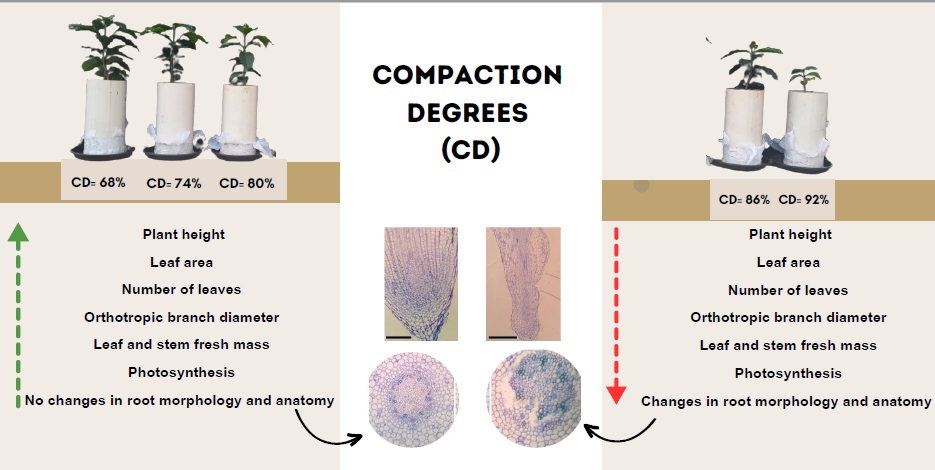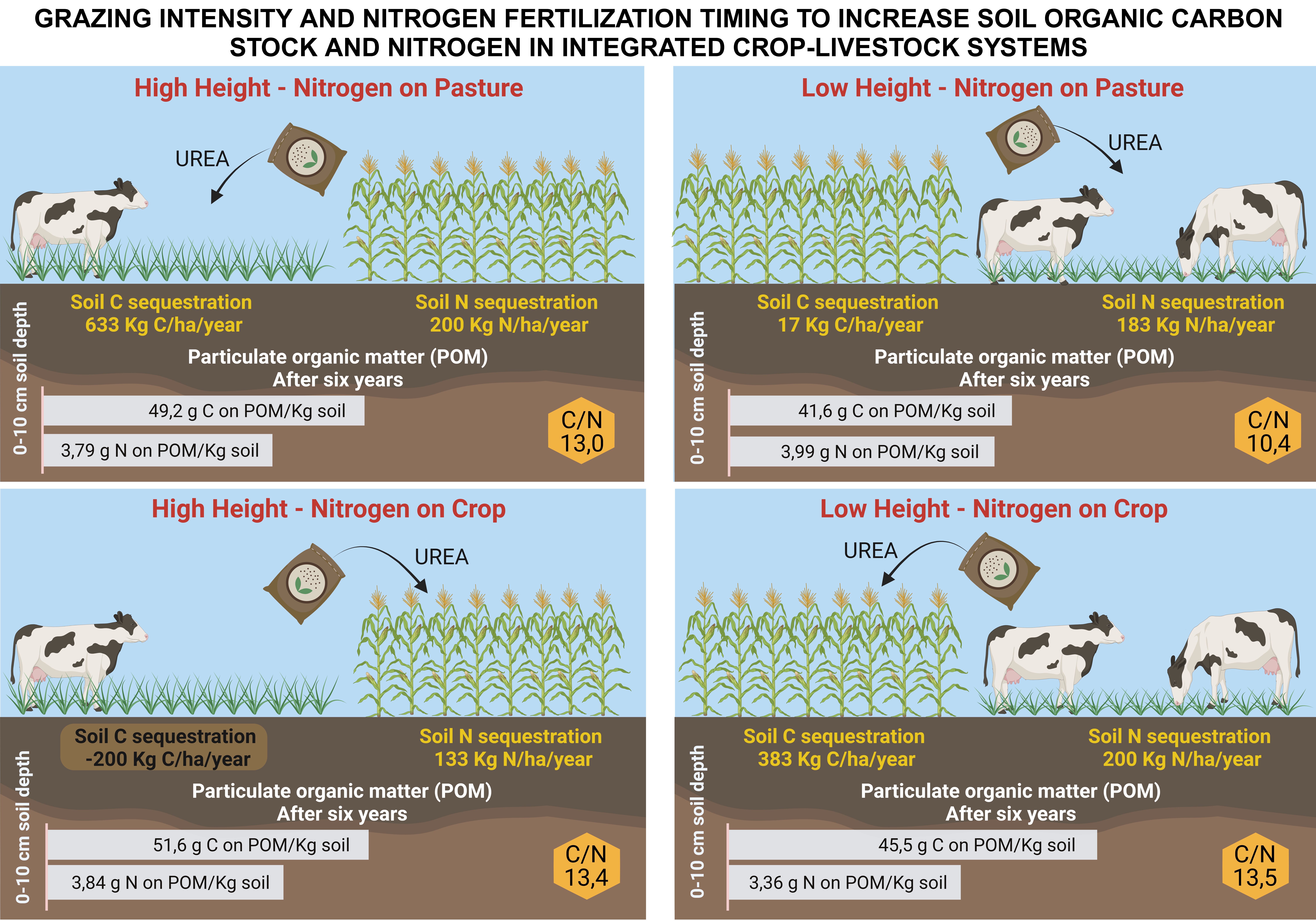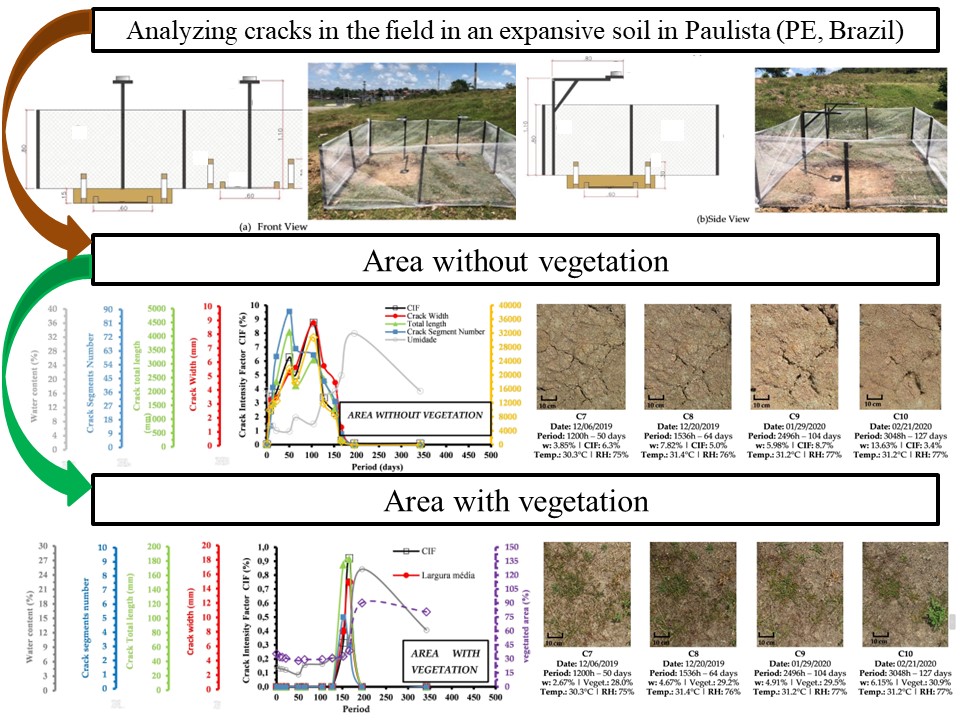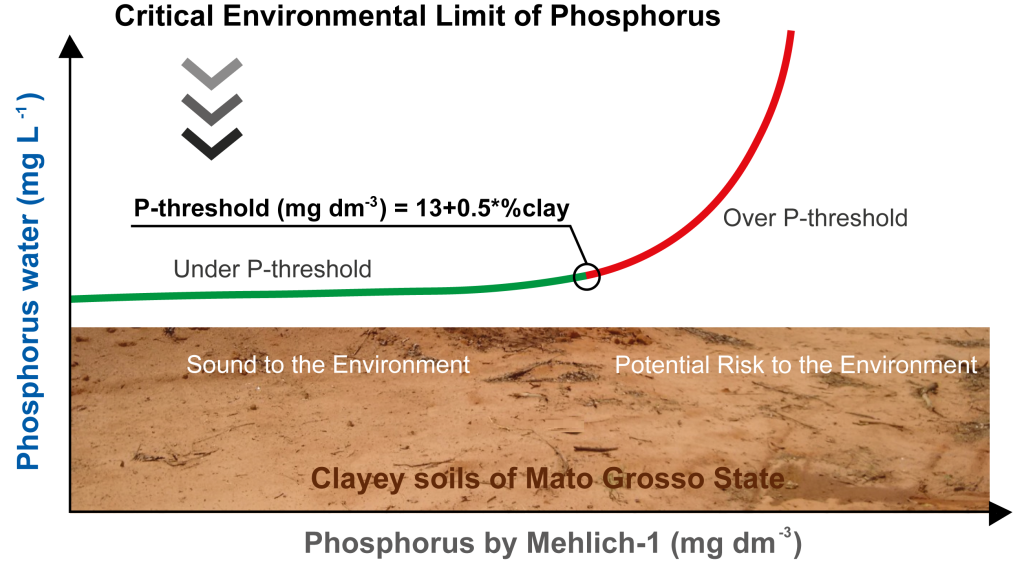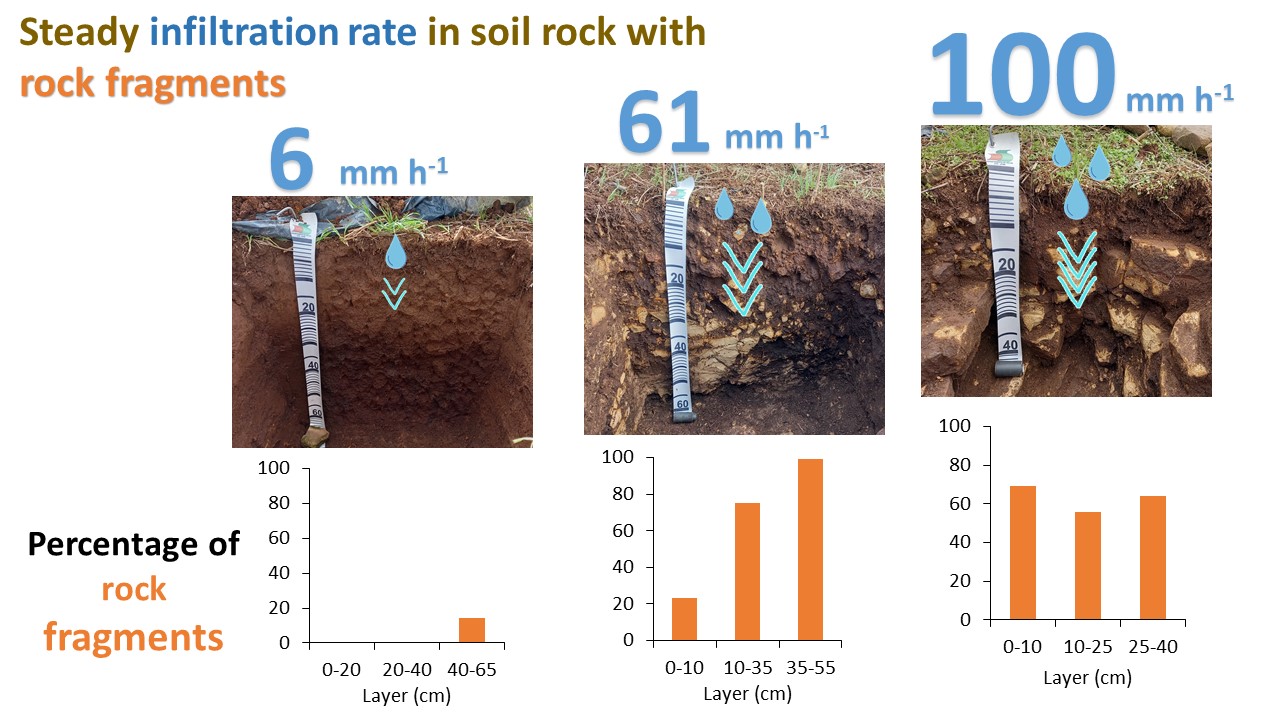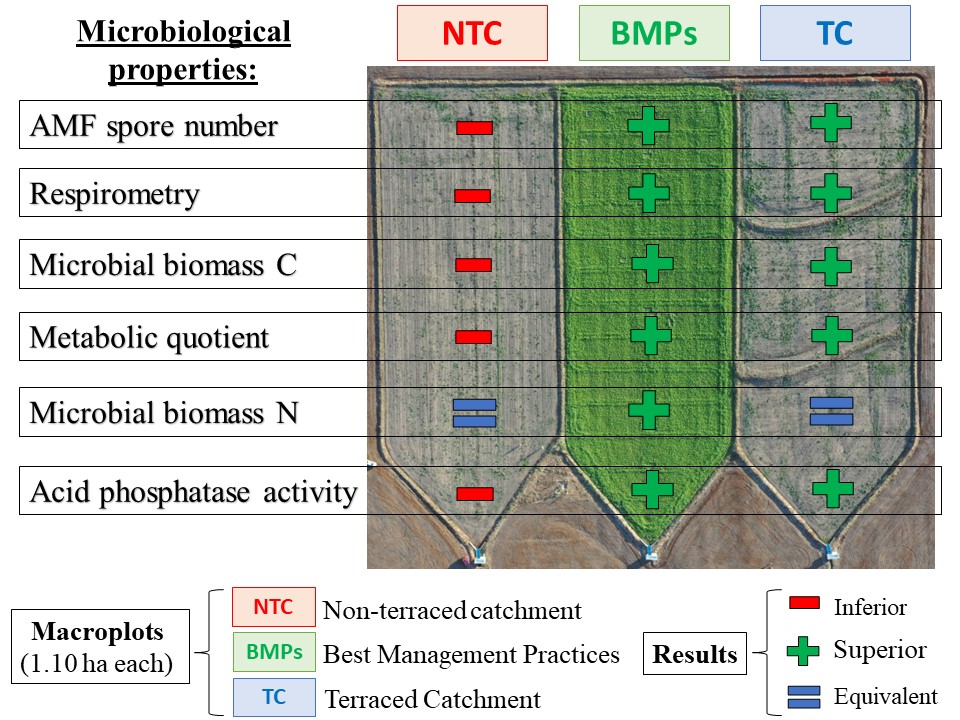Physiological and morphological responses of Arabica coffee cultivars to soil compaction
07/Dec/2023
ABSTRACT Compaction caused by mechanization affects soil quality and, consequently, the development of crops. This study aimed to evaluate the effect of different degrees of soil compaction on the physiology, morphology, and anatomy of different coffee cultivars in a controlled environment. The experiment was carried out in a greenhouse, with randomized block design in a 5 × 5 factorial arrangement, with five coffee cultivars (Arara, Catuaí Amarelo IAC 62, Catuaí Vermelho 144, MGS Paraíso 2 and Mundo Novo IAC 379-19) […]
Carbon and nitrogen stocks in a Rhodic Nitisol under different tillage methods and mineral and organic fertilizers
07/Dec/2023
ABSTRACT Changes in soil management, for example by more vigorous crops, adoption of conservation tillage and optimization of fertilization, can increase soil organic carbon (SOC) and total nitrogen (TN) stocks. We hypothesized that corn – black oat rotation under no-tillage (NT) and adequate soil fertilization can increase these stocks, compared to conventional tillage (CT). This study compared these two tillage methods and organic with mineral fertilizers, regarding their effects on C and N cycling and SOC and TN stocks in […]
Inversion of soil properties with hyperspectral reflectance in construction areas of high-standard farmland
07/Dec/2023
ABSTRACT High-standard farmland construction is an important process that can enhance food security and accelerate new-style modernization agriculture. Hyperspectral remote sensing can provide data and technical support for this type of construction to provide a reference when optimizing high-standard farmland construction areas. This study was performed in Xinzheng City, the primary grain-producing areas in Henan Province. Field sampling and indoor hyperspectral spectroscopy (350~2500 nm) were combined; spectral transformations such as continuum removal (CR) were performed after Savitzky‒Golay (SG) convolution smoothing; […]
Grazing intensity and nitrogen fertilization timing to increase soil organic carbon stock and nitrogen in integrated crop-livestock systems
07/Dec/2023
ABSTRACT Integrated crop-livestock systems (ICLS) foster synergistic relationships to increase nitrogen (N) cycling and soil organic carbon (SOC) accrual in agricultural setups. This study evaluated how the grazing intensity and N fertilization (rates and timing) affect both SOC and N fractions, and soil organic matter chemical composition in an ICLS managed under no-tillage in an Oxisol, six years after initiation. The ICLS was compared to a nearby pasture (PA) and a native forest (NF). The treatments consisted of two grazing […]
Rhizosphere microbiome engineering of Triticum aestivum L.
07/Dec/2023
ABSTRACT Root-associated microbiomes (RAMs) are complex microbial communities, essential for plant growth and development. The RAMs interact with the roots, maintain the root architecture, protect plants from a plethora of pathogens and biotic and abiotic stress and intensify nutrient uptake, i.e., improve plant growth and yield. A wide variety of microbial populations is usually found in the rhizosphere. Plant exudates also play a significant role in the establishment of rhizospheric microbial communities. This study deals with the approach of microbiome […]
Cracking process in expansive soil with and without vegetation covers in dry and rainy seasons at field scale
28/Nov/2023
ABSTRACT The presence of desiccation cracks in the soil alters its hydromechanical behavior, increasing the soil’s water infiltration capacity, mobilizing the potential for expansion. This may affect the performance of the structural elements of the construction. This study aimed to evaluate the mechanics of expansion, contraction and cracking of the expansive soil of Paulista – Pernambuco, Brazil, through field trials, subject to wetting cycles and drying. The studied soil is a sandy silty clay of high compressibility with medium to […]
Microstructural changes in Oxisols under long-term different management systems
28/Nov/2023
ABSTRACT There has long been a discussion about the effects of soil management on its structure. Since changes can occur due to management and time of use, more accurate assessments can be achieved if carried out in long-term experiments. This study investigated the long-term effects of soil management on the physical quality of a Cerrado Oxisol (Latossolo Vermelho), focusing on microstructural changes. Micromorphology and computed tomography techniques were used to assess the soil’s microstructure. The study compared areas under long-term […]
Establishing environmental soil phosphorus thresholds to mitigate its transfer to water bodies in Mato Grosso State, Brazil
28/Nov/2023
ABSTRACT Excessive phosphorus (P) applications can increase nutrient levels in the soil, facilitating its transference to aquatic environments and causing contamination. Thus, the environmental P threshold (P-threshold) is a tool to establish a sound level of P in the soil, in which P values below the threshold are harmless to the environment. This study aimed to establish a P-threshold equation for the soils of Mato Grosso State, Brazil. Twenty samples of representative soils from the main swine production regions of […]
Rock-soil skeleton increases water infiltration
28/Nov/2023
ABSTRACT A widespread assumption among researchers and technicians is that stony soils are more susceptible to degradation. However, the role of rock fragments in the hydrology of stony soils, especially in regard to infiltration, is still a research gap. The aim of this study was to test the hypothesis that an increase in rock fragments in the soil profile increases the water infiltration rate. Infiltration tests using a double-ring infiltrometer were conducted on February 11, 2021, and December 11, 2022, […]
Soil microbial properties are improved by the adoption of soil management and conservation practices in no-tillage system
28/Nov/2023
ABSTRACT No-tillage system (NTS) plays a prominent role in conservation agriculture, however, its benefits can be further improved by adopting complementary soil management and conservation practices, such as using autumnal cover crops, contour seeding, and terraces. This study aimed to evaluate how soil biological activity responds to soil management and conservation systems. The treatments consisted of three macroplots with an area of 11.000 m2 each, as follows: a) Non-Terraced catchment (NTC), cultivated in NTS similar to most farmers of the […]

